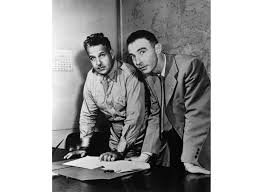Oppenheimer’s Connections to New Mexico: A Legacy of Scientific Discovery and Nuclear History
New Mexico, often referred to as the “Land of Enchantment,” holds a significant place in the history of science and the development of nuclear technology. Among the many individuals who left an indelible mark on the state’s scientific landscape, none are more prominent than J. Robert Oppenheimer, the renowned physicist often referred to as the “father of the atomic bomb.” Oppenheimer’s connections to New Mexico are deeply intertwined with his pivotal role in the Manhattan Project, which brought him to the state and left an enduring legacy. In the early 1940s, as World War II raged on, Oppenheimer was recruited to lead the top-secret Manhattan Project, which aimed to develop an atomic weapon. The remote and sparsely populated region of New Mexico proved to be an ideal location for the project’s research and testing activities. Thus, Oppenheimer and his team established the Los Alamos Laboratory in the mountains of northern New Mexico. Located about 35 miles northwest of Santa Fe, Los Alamos became the epicenter of scientific innovation during the war. Oppenheimer assembled a brilliant group of scientists and engineers who worked tirelessly to unlock the secrets of atomic energy. The laboratory’s secluded location provided the necessary secrecy and security for their groundbreaking research. Under Oppenheimer’s leadership, Los Alamos became a bustling scientific community, attracting some of the brightest minds in the world. Scientists like Enrico Fermi, Hans Bethe, and Richard Feynman worked alongside Oppenheimer, pushing the boundaries of physics and engineering. Together, they tackled complex challenges in the race to build the first atomic bomb. In July 1945, Oppenheimer’s efforts culminated in the successful Trinity Test, the first detonation of a nuclear device. The test took place in the desert near Alamogordo, New Mexico, marking a turning point in human history. The destructive power of the atomic bomb became evident, forever changing the course of warfare and international relations. After the war, Oppenheimer’s ties to New Mexico continued. He played a key role in the establishment of the Los Alamos National Laboratory, which transitioned from a military research facility to a scientific institution focused on various fields, including nuclear physics, materials science, and computational research. The laboratory has since become a world-leading center for scientific inquiry and innovation, attracting researchers from around the globe. Oppenheimer’s contributions to science and his connections to New Mexico earned him lasting recognition. In 1963, the state honored him by renaming the Los Alamos Laboratory the “Los Alamos Scientific Laboratory,” and later, it was renamed again as the “Los Alamos National Laboratory.” Moreover, the Bradbury Science Museum, located in downtown Los Alamos, showcases the laboratory’s history and pays tribute to Oppenheimer and the scientists who worked there. Oppenheimer’s connections to New Mexico represent a complex legacy. While his scientific achievements and leadership during the Manhattan Project are unquestionable, his role in the development of the atomic bomb also raises moral and ethical questions. Nonetheless, New Mexico remains a place where the scientific spirit and the pursuit of knowledge continue to thrive, with Oppenheimer’s contributions serving as a reminder of the state’s enduring scientific legacy.

